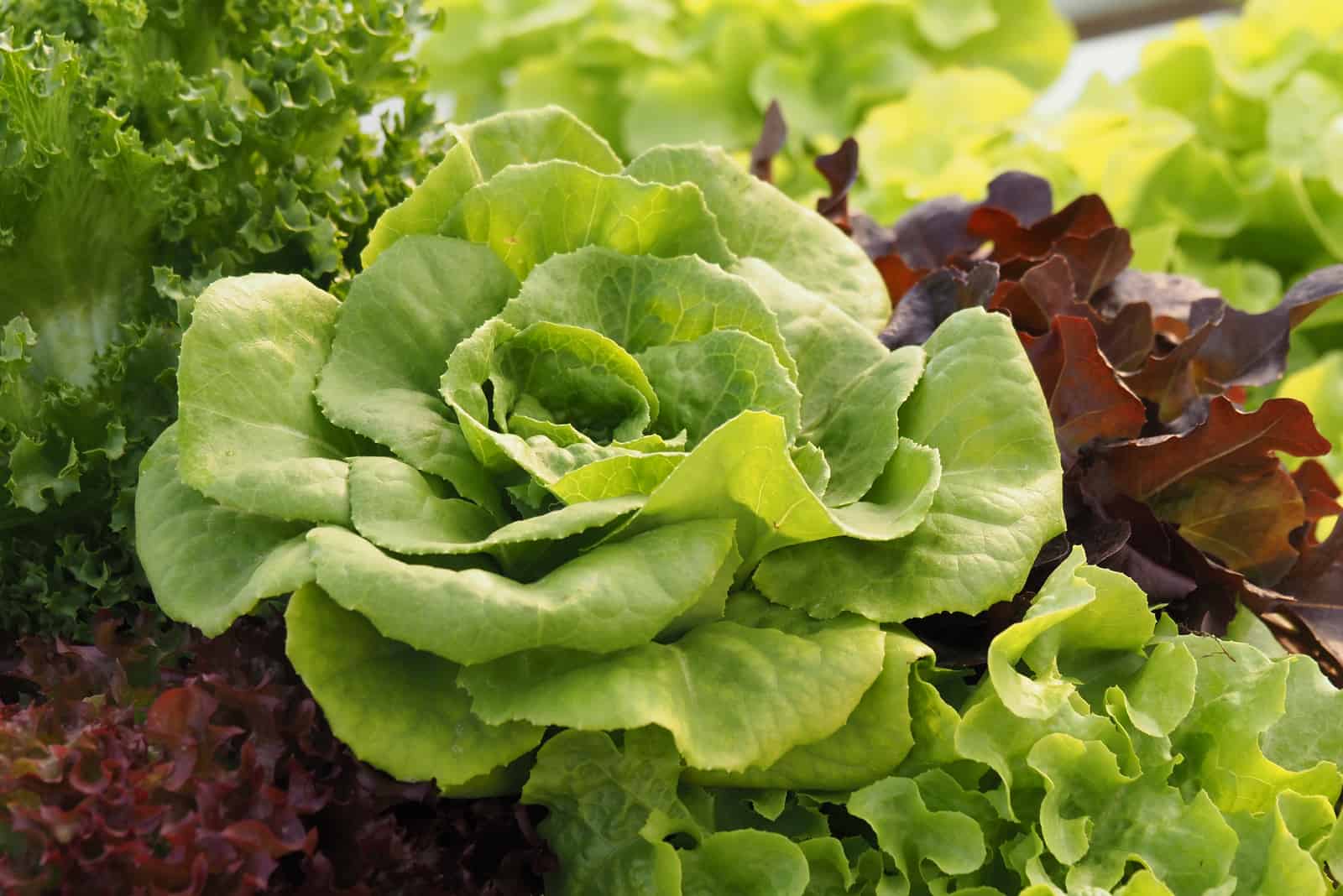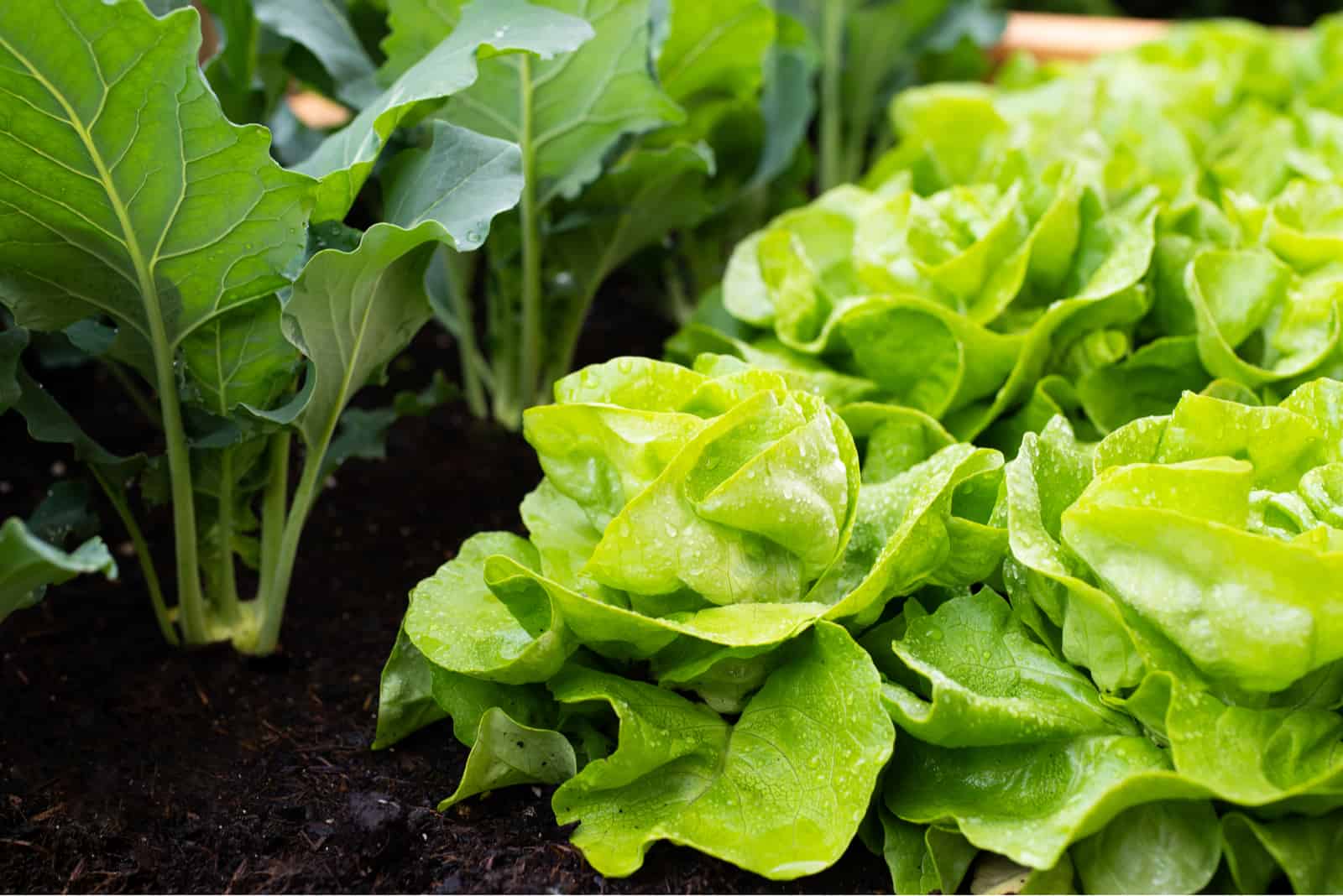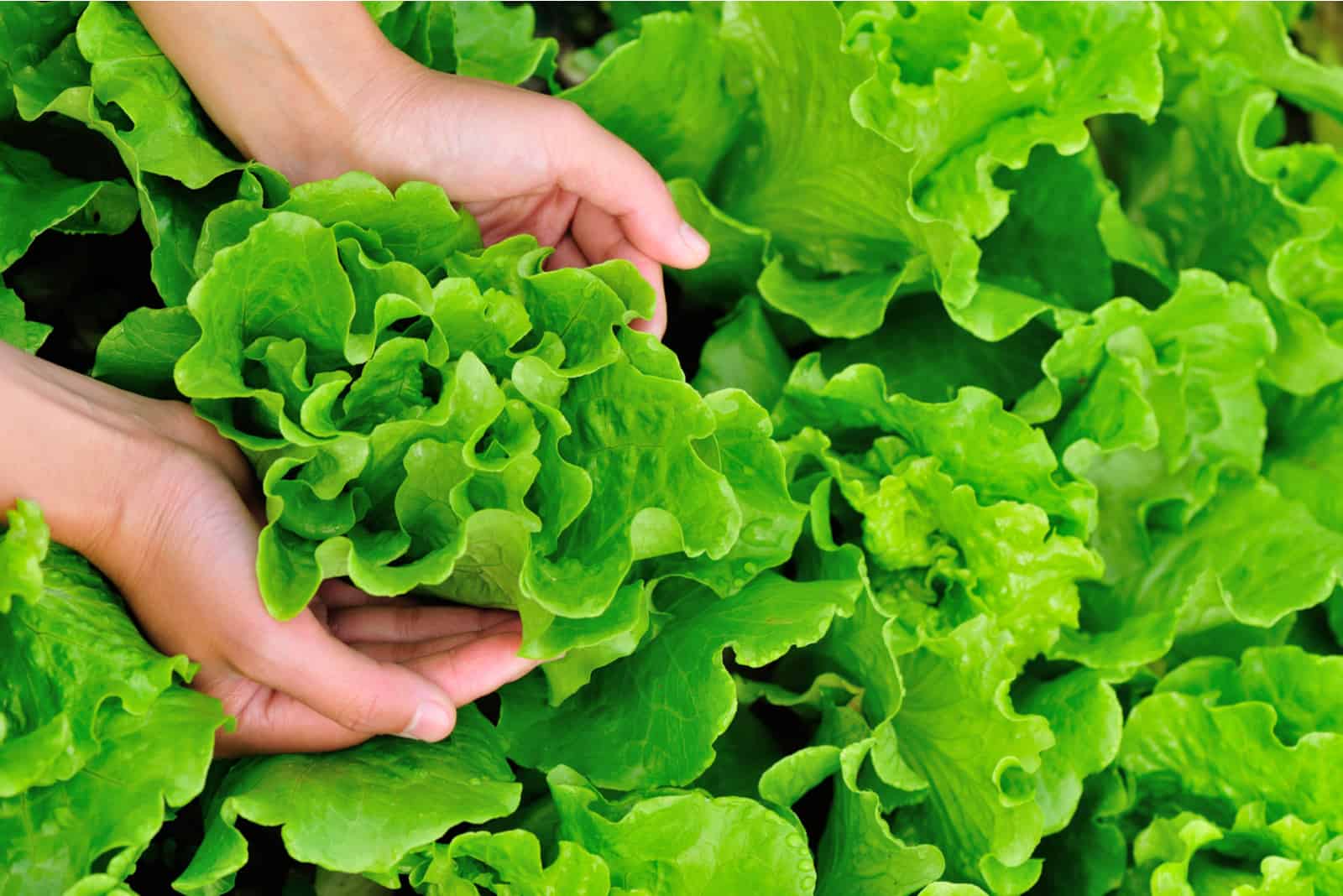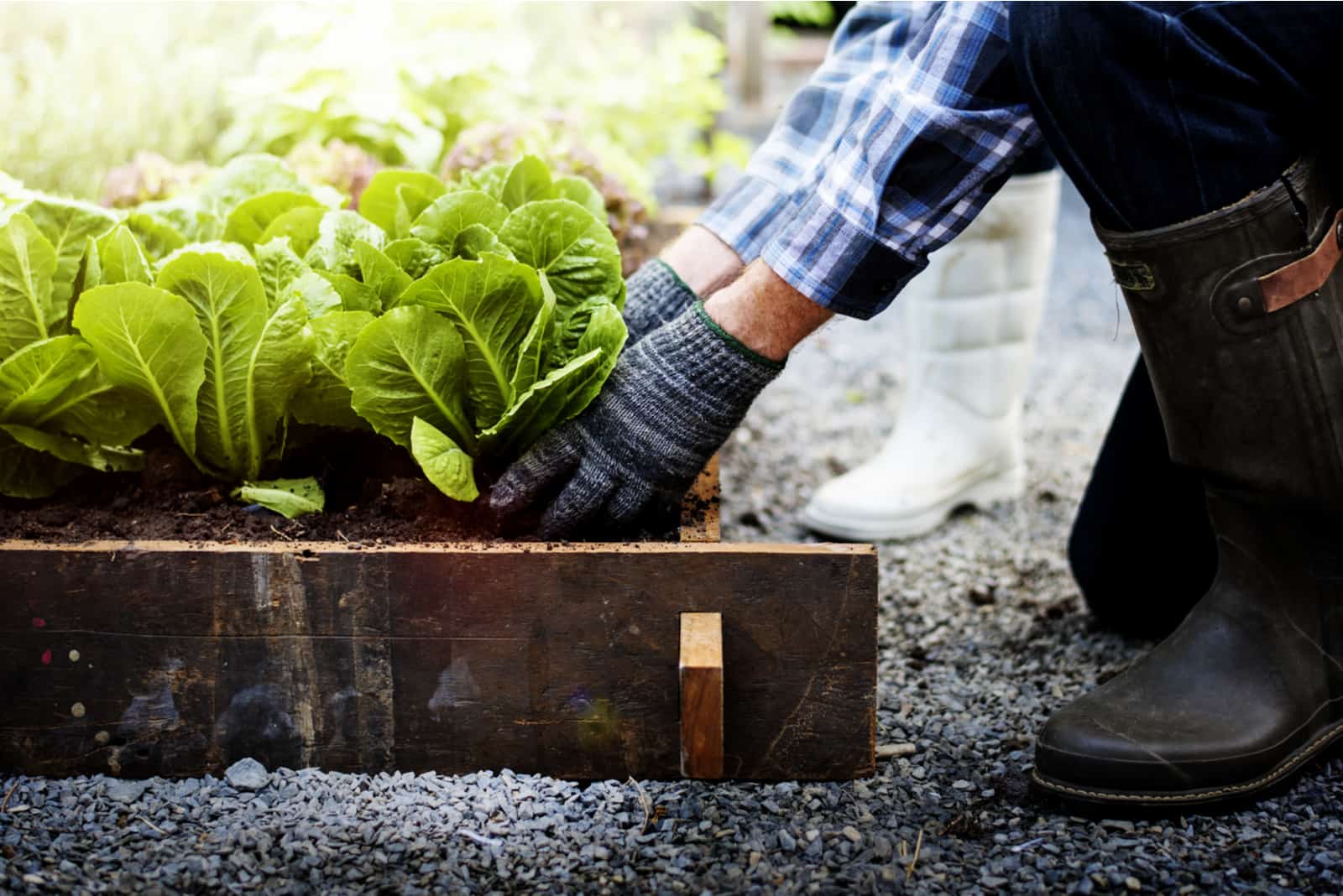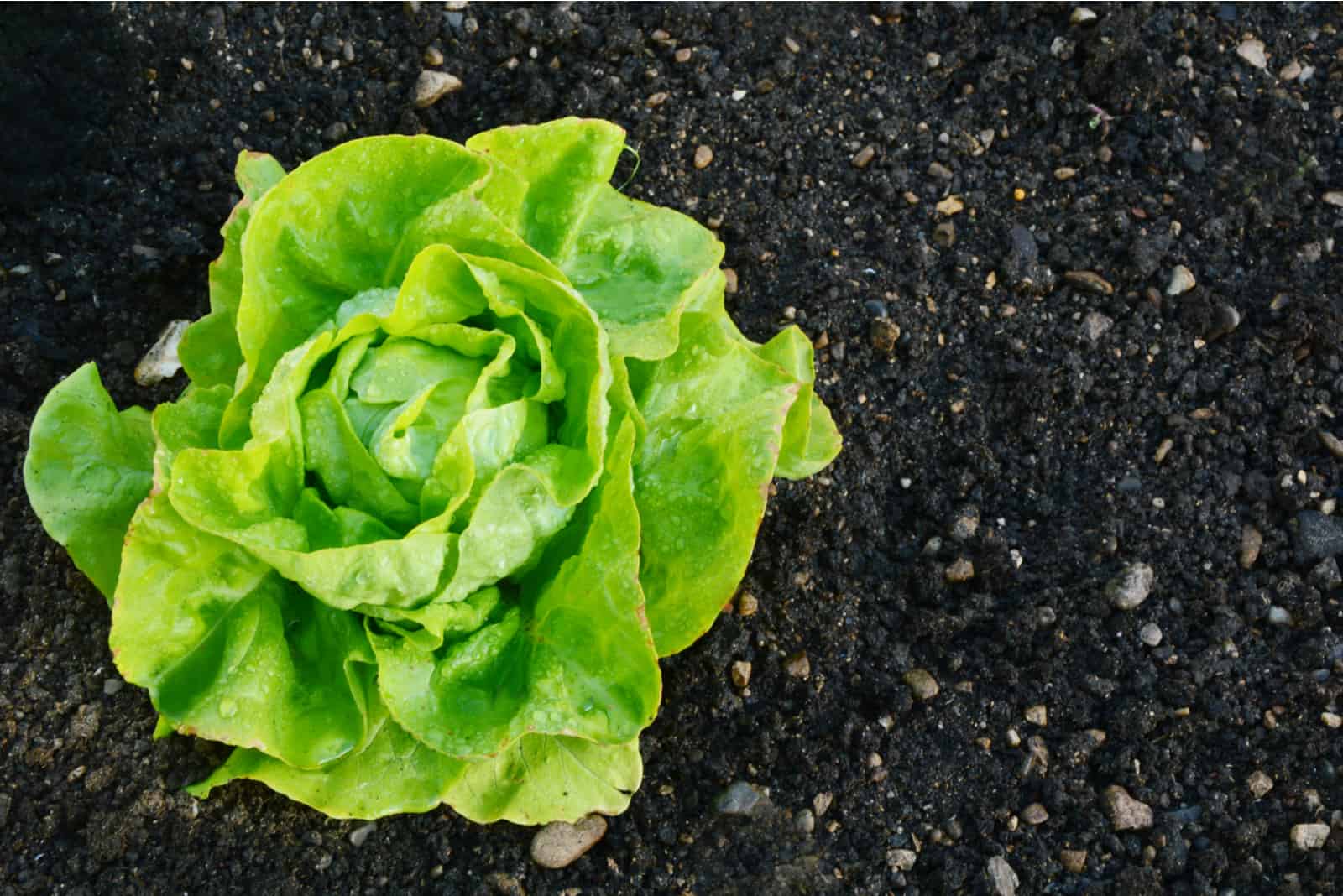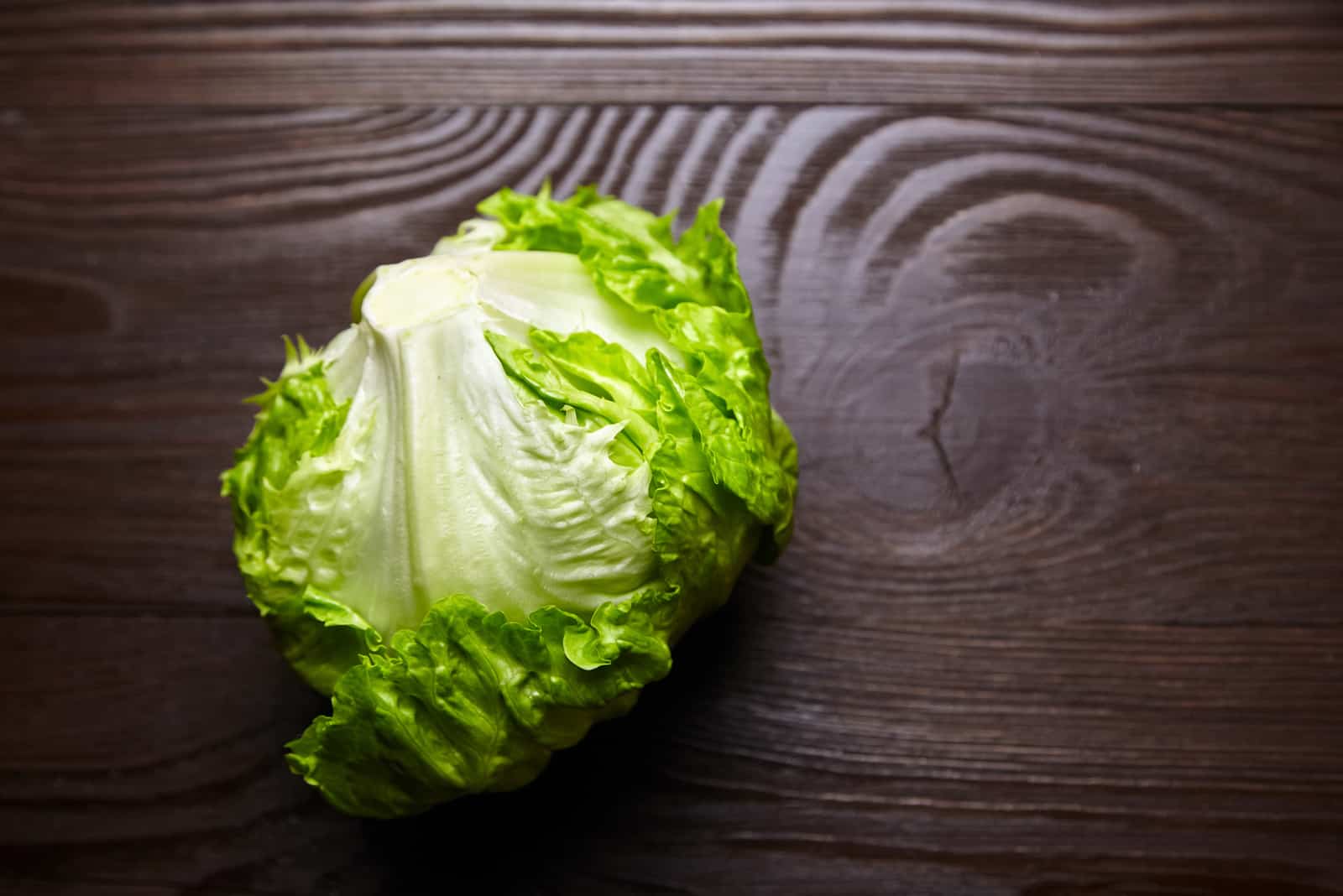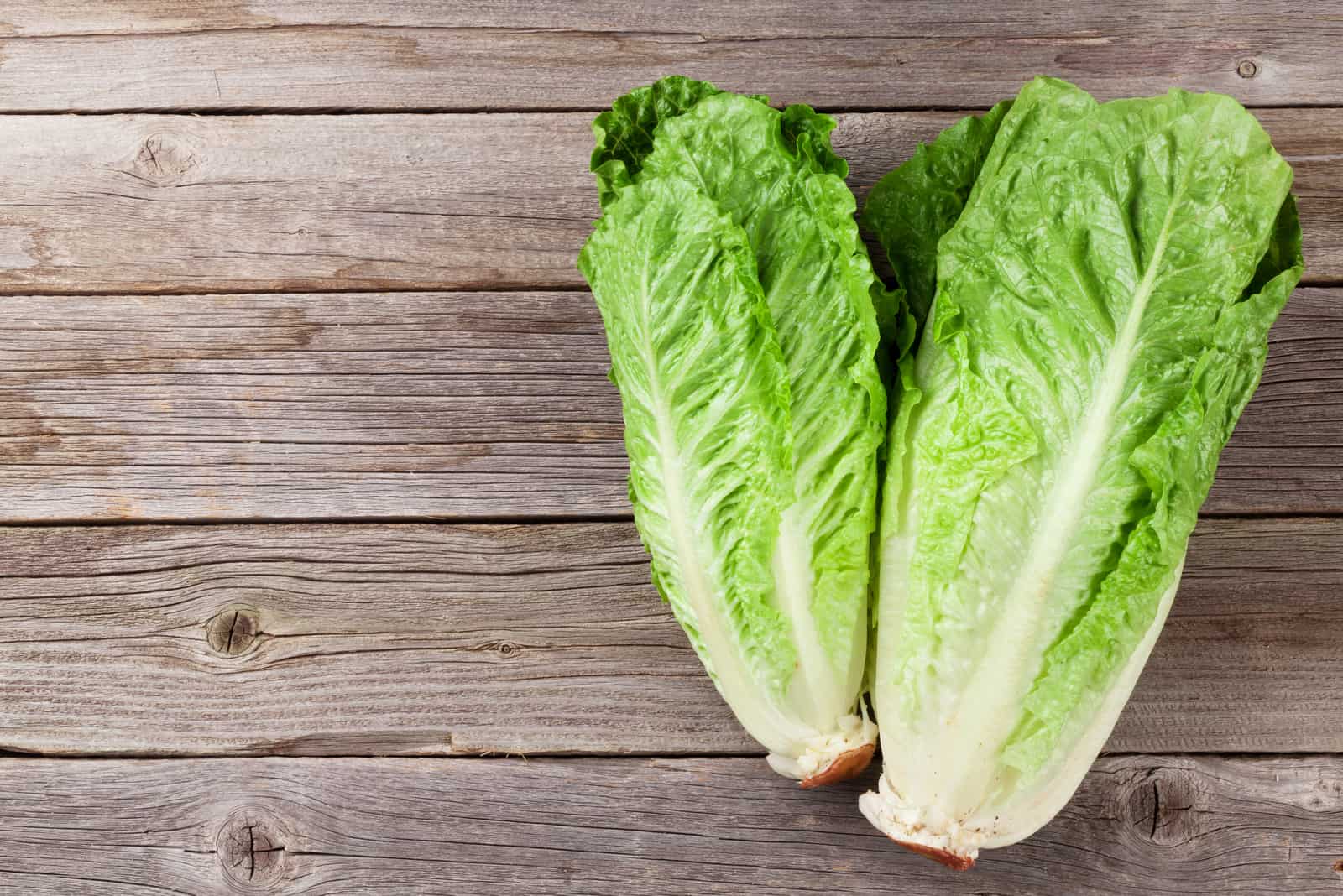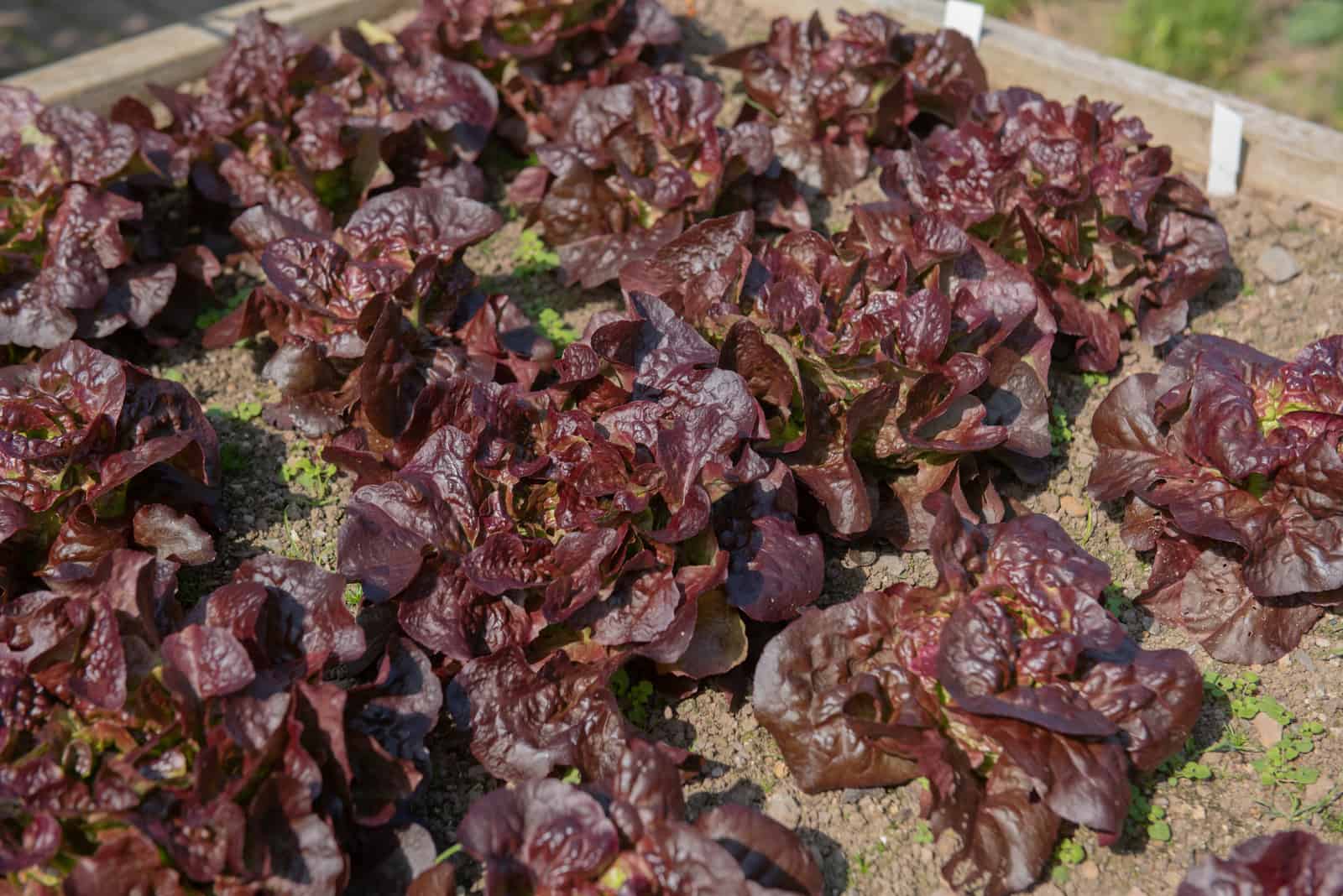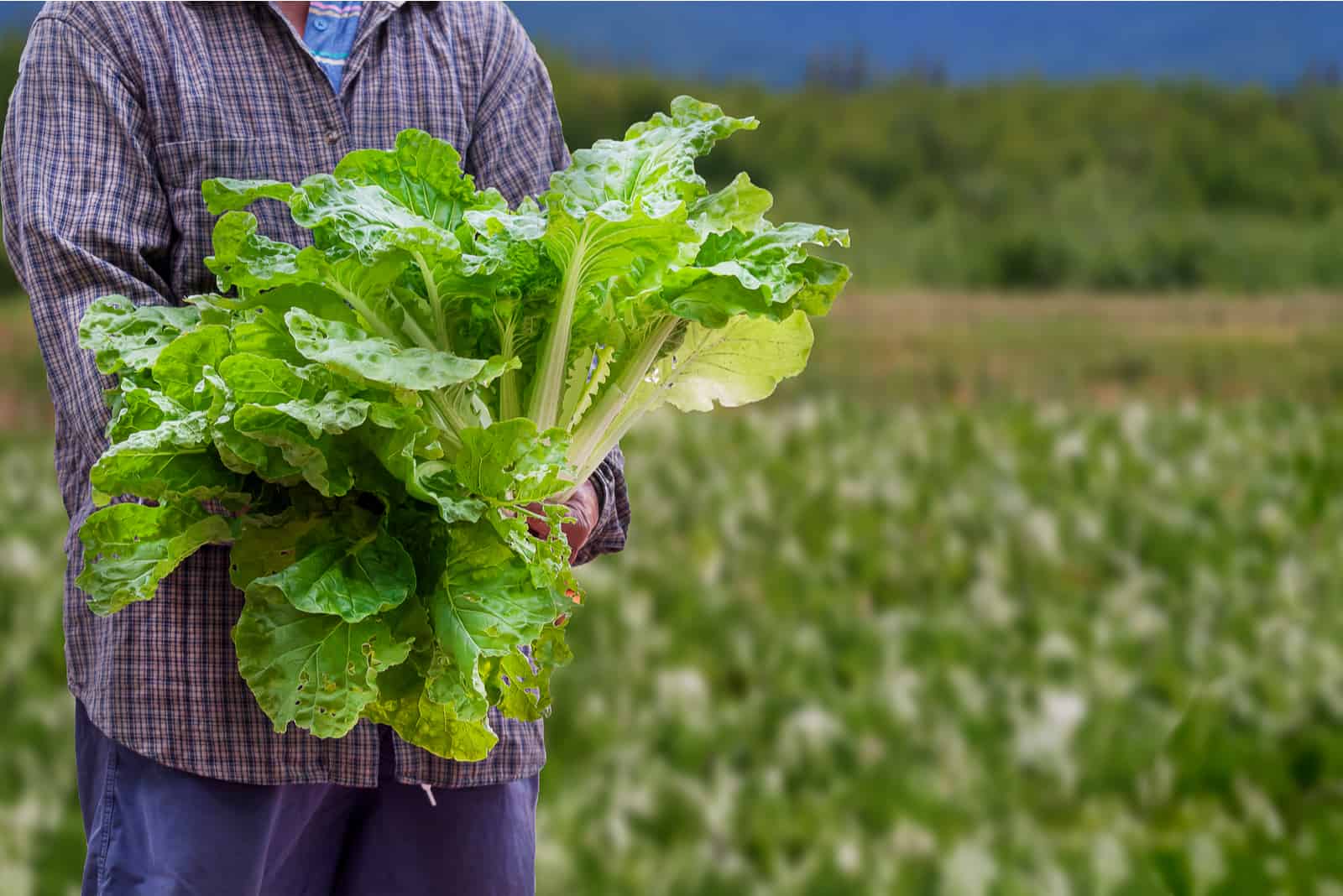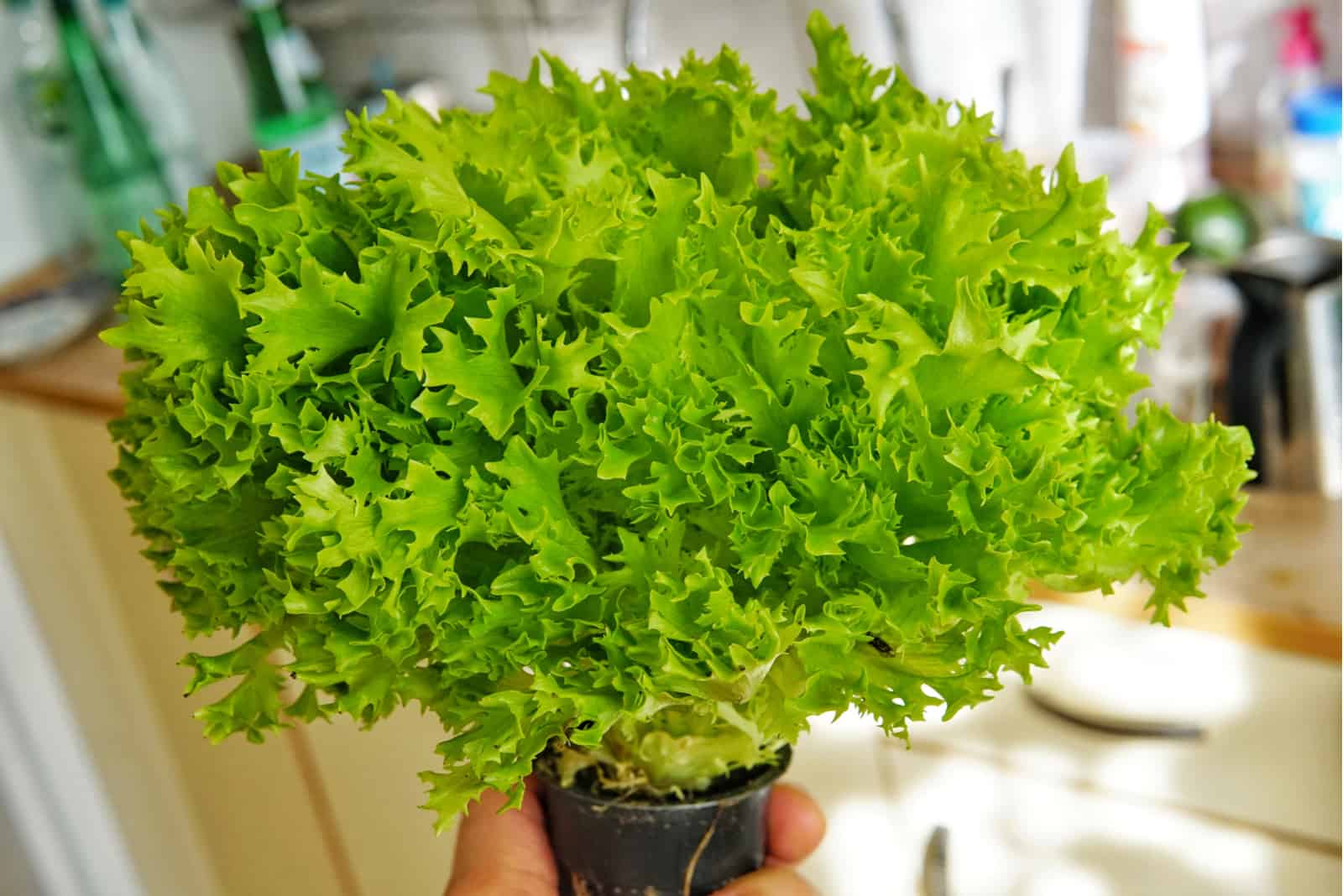We all like lettuce in our sandwiches and salads, but what happens when this vegetable doesn’t taste good?
Bitter lettuce is not something that will go unnoticed in your Caesar salad. It’s not like arugula, so you can’t use it to add a more pungent taste to your dishes.
This article brings you the most common reasons for bitter-tasting lettuce and how to prevent your lettuce from losing its sweet taste.
But first, some general specifics about lettuce:
[table id=75 /]
Now that you know some basic things about the lettuce plant, it is time to shed some light on the things which can make it bitter.
5 Causes Of Bitter Lettuce
You have no idea how many times I have heard questions such as, “why is my lettuce bitter?” “Should I eat bitter lettuce or not?” “Is there any chance I can retrieve the sweet taste of my lettuce?” and so on.
So, I have decided to compile a list of the main reasons for bitter-tasting lettuce, so that you’ll know what things to avoid and how to shield your vegetable from poor conditions.
1. Hot Weather
Common lettuce is a cool-season vegetable, and one of the main reasons behind bitter lettuce is the summer heat. The lettuce plant requires plenty of sunlight, but the hot midday sun makes it taste bitter.
The reason that the lettuce turns bitter in hot weather is bolting. Bolting signifies the plant’s maturation; the plant produces flowers and seeds, which is a natural process, but it changes the taste of the lettuce.
You should harvest your lettuce leaves early in the morning before the afternoon heat, and then you can forget all about any bitter flavor in your lettuce.
2. Old Plants
Lettuce is usually an annual plant, but it cannot produce leaves all year long. Head lettuce is ready to be harvested within two months (sometimes a month and a half).
Loose-leaf lettuce can produce edible leaves for about three months, but you should keep an eye on both these varieties once they are older than two months.
Old plants bolt, and bolting lettuce produces more sap, which makes the plants taste bitter. However, you can get ahead of this if you harvest lettuce frequently.
If you notice more white sap once you remove the outer leaves, you should harvest the entire plant because it will only produce more sap and become more bitter.
3. Not Enough Water
Lettuce plants need plenty of water to gain their sweet flavor. The soil should always be somewhat moist, so you need to fix a regular watering schedule and stick to it.
When the leaves turn brown, it’s a sign that the plant needs water, so you should water it thoroughly.
4. Poor Nutrition
Lettuce is a fast-growing vegetable, so you need to make sure it has the proper conditions for optimal growth, and this includes nutrition as well.
Lettuce needs to be fertilized in order to produce the sweetest leaves. However, nitrogen fertilizers lead to bitterness, so you should find a fertilizer with more phosphorus and potassium to increase the sweet flavor of your lettuce.
5. Aster Yellows
The final culprit causing the bitter flavor of lettuce is a disease called aster yellows. You can recognize this infection by the deformation of the leaves: the outer leaves will be stunted, and the color of the inner leaves will fade, or they’ll get pink or beige spots.
There is no remedy for this infection, but there are some things you can do to prevent it. You’ll need to separate the infected plants from the healthy ones as soon as you notice the disease.
And you can always buy a resistant species if you don’t feel like risking it!
How To Prevent Lettuce Getting Bitter?
Based on the causes of bitter lettuce, we have made a short list of preventive methods.
This section will teach you how to treat your lettuce plant to ensure you harvest sweet leaves instead of bitter ones.
Sun Protection
Even though lettuce loves plenty of light, it also loves cool weather, so you need to protect it from the scorching afternoon sun.
Put a shade cloth over the whole plant to protect it from any burning sunlight and heat.
Lettuce needs at least five hours of direct sunlight, and it gets that amount in the morning when the temperatures are cooler, so we don’t need to leave it sitting in the hot sun all day long.
Mulching
Mulching helps keep the soil moist and warm, so don’t let the extra work scare you off. It is quite beneficial!
Use organic mulch, such as grass clippings, straw, wood chips, or some other material of your choice.
Grass clippings have their pros and cons, but so do other materials, and since they are completely organic, destroy weeds, and retain moisture your lettuce needs, they might be exactly what your lettuce needs.
Every plant in your vegetable garden will prefer mulching, so you’ll be doing yourself a favor. Your lettuce, beets, carrots, and parsnips will love it, and you’ll be able to forget you ever grew a vegetable with a bitter taste.
Harvesting Time
The time for harvesting lettuce is extremely important, as your lettuce crop needs some time to recover from the heat.
Let it rest overnight, water it thoroughly, and avoid the bitter flavor.
Also, if you know that it will rain in the next few days, you can pick your lettuce after it gets a nice rain shower.
Sure, watering lettuce in the evening helps, but nothing can compare to rain!
Is Bitter Lettuce Safe To Eat?
You don’t have to fear for your life if you have eaten bitter lettuce; it is not toxic and won’t do any harm.
It might not be enjoyable because it is not crispy and sweet, but you don’t have to throw it away if you don’t like the bitter taste.
You can add some chicken, tomatoes, boiled eggs, grated carrots, and cheese, and top it all with a nice yogurt dressing. This will mask the bitterness, and it also makes a healthy meal.
If you don’t like the bitter flavor, you can always cook it and make a soup or a nice stew.
How do I make sure my lettuce isn’t bitter?
Cold Water
After you pick the lettuce, put it in a bowl of cold water to keep it fresh and, if it’s bitter, you can add baking soda. Allow the leaves to soak for about ten minutes, wash off the baking soda using cold water, and then soak them again.
After a few minutes, take out the lettuce leaves, rinse them again, and arrange them on a plate or put them in a sandwich.
Also, baking soda just helps to clean the lettuce; it’s the cold water that does the hard job and removes the bitterness.
Refrigerate The Lettuce
We sometimes refrigerate them for several hours before use, which helps with the taste, but your teeth might be surprised by the cold!
Generally, the longer the lettuce stays in cold water, the less bitter it will be. In addition to refrigerating, we sometimes add plain ice, which helps with the cooling.
What To Do With A Bitter Lettuce?
If you don’t want to eat the bitter lettuce and don’t have enough time to wait for your lettuce to be done with its cold bath, there are other ways to use bitter lettuce, so you won’t have to throw it away.
Let It Flower
If your lettuce has grown old and has already started growing flower stalks, you don’t have to force yourself to eat something you don’t like.
You can let it go through its natural cycle without picking it, and when it grows flowers, they will produce seeds that you can dry out and set aside for the next season.
That way, you don’t have to frown every time you see lettuce on the table!
Here’s a video showing you how to grow lettuce from seed.
Make Compost
If you don’t feel like eating bitter lettuce today, or any other day, simply add it to your compost.
Keep the compost moist and rich in nitrogen, and you will have a fresh fertilizer for your plants and vegetables.
Feed The Animals
Finally, you can give the unwanted lettuce to your animals; they won’t mind it.
We have lived on a small farm, so we have never thrown away good food sources. The animals will be happy and won’t even notice that the lettuce is bitter.
Varieties Of Lettuce
There are many types of lettuce that can make our meals tastier and more appealing. These are separated into four categories, and we’ll now bring you the features of each class so that you can choose which one is the best for you.
Different varieties of lettuce have different tastes, and some are even bitter. Each category has a different taste, and we’ll explain to you the basic characteristics of each.
Butterhead Lettuce
There are two butterhead lettuce varieties, the bibb, and Boston (or buttercrunch) lettuce. The butter lettuce leaves are usually light or dark green; they have round heads. Also, the Boston variety is generally more prominent than the bibb.
Butterhead lettuce is a type of head lettuce that may be used as a lettuce wrap because of its large and broad leaves.
It is a healthy vegetable and has a mildly sweet taste that goes perfectly with any dish. The sweetest variety of lettuce we have ever tried is the cultivar ‘Tom Thumb.’
Not many agree on this particular variety, but everyone will say that butterheads are the sweetest.
This lettuce is also a source of antioxidants and vitamins A, C, and K. It contains antioxidants that prevent certain conditions that cause poor vision, while the vitamin K keeps your bones strong.
It also has more iron than other types of lettuce, but you should eat plenty of vitamin C to help absorb the iron.
Crisphead Lettuce
The most common crisphead lettuce is the Iceberg lettuce. This variety also forms heads, and the leaves are usually light green with yellow and white.
This lettuce can also be used as lettuce wraps, but what makes it a good lettuce choice is its longevity, as it lasts longer than other varieties.
It has fewer vitamins and iron than butterhead lettuce varieties, but it doesn’t make it an unhealthy plant.
It is crispy and sweet; everything you need from lettuce.
Romaine Lettuce
Romaine lettuce usually looks like a bundle of leaves, and we never look for its head. The head of this lettuce lasts between six and ten days, but it is its leaves that we’re concerned about. You can recognize them by their bright green color and the white line down the middle.
Some varieties have those amazing purple-red leaves that we love seeing on our plates, and they go quite nicely with endive or chicory.
Romaine lettuce has a bitter flavor, so if you’re a fan of sweet-tasting lettuce, you should check out butterhead lettuce instead.
Romaine lettuce contains high levels of vitamins A and K, calcium, and iron. It is rich in antioxidants, protects your teeth and bones, and has a small amount of vitamin C which boosts your immune system.
Loose-leaf Lettuce
Loose-leaf lettuce is usually more heat-tolerant than head lettuce varieties. Oakleaf Lettuce is the most popular leaf variety, so we’ll examine it more closely.
You can grow a full-size oak leaf lettuce with the head and all, but we can’t wait that long, and we always pick their “baby leaves” before they develop heads.
They can be both dark green and red, and they are a nice touch in salads alongside radicchio. The flavor is mild and sweet, though it is known to turn bitter as it gets older.
It is extremely rich in vitamins A and K, just like the other varieties. There’s been evidence that it lowers the absorption of cholesterol, and that the vitamins keep your eyesight intact.
FAQ
Now that you know how to prevent bitterness in lettuce and what to do with it if it ever becomes bitter, it is time to answer some questions that you have asked us.
It was an interesting bunch, but somehow we sifted through all of them and chose the three most interesting ones.
What is the difference between bitter lettuce and regular lettuce?
The main difference between bitter and regular lettuce is the taste. The lettuce becomes bitter if it bolts, and this happens because of heat or because the plant is old.
Also, some varieties of lettuce are more bitter than others, so it’s better to check what you’re buying first than be sorry later.
What is the root of the word lettuce?
The word “lettuce” most likely comes from the Old French word laitues, which is a plural of the word laitue, “milky” in English translation.
The mere word “lettuce” was borrowed from Latin lactuca, and the root lac also means “milky.”
What are the benefits of eating bitter lettuce?
Lettuce has numerous health benefits as it is a good source of vitamins A, C, and K, iron, calcium, and magnesium, whether bitter or sweet.
Not all varieties have the same amount of these nutrients and minerals, but the difference is barely noticeable.
Vitamin K and calcium keep your teeth and bones healthy; vitamin A is good for your vision, and C for immunity. We already know that iron is essential for your body’s oxygen supply, and magnesium helps you to recover from a hard workout faster.
Finishing Up
Now that you know how healthy this vegetable actually is, eating bitter lettuce doesn’t seem like much of an issue.
However, if you’re like me and you don’t like bitter vegetables (unless it is naturally bitter like arugula), now you know some ways to bring back that sweet flavor.
However, if it’s too much bother for you and you have a whole garden of sweet lettuce, you can always make compost or feed your animals with the bitter-tasting lettuce, so you don’t have to throw it away.
We hope you enjoyed reading and until next time!

